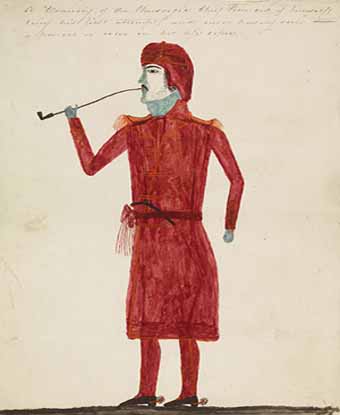Last updated: September 14, 2017
Person
Josiah Francis

British Museum, London
Josiah Francis was a major Red Stick religious leader of the Creek Indians of Alabama and of the Creek civil war which became a war against the United States in 1813 and 1814. Francis, also known as Hillis Harjo (“crazy-brave medicine”), was born to a South Carolina frontier silversmith and a Creek Indian mother in central Alabama around 1770. Partially under the influence of the Shawnee leader Tecumseh, he became a “prophet” of the Red Stick movement which attempted to purify Creek culture of foreign elements. In 1812, he and other prophets began a civil war against the Creek Indian National Council which sought closer relationships with the United States. Following an attack at Burnt Corn Creek in southern Alabama by American militia, William Weatherford and Francis planned counter attacks on the American Fort Mims in Baldwin County in August 1813. After the major U.S victory over the Creeks at Horseshoe Bend in March, 1814, Francis and some 1000 Red Sticks fled to north Florida where they soon aligned with British forces and became known as Seminoles. In 1815, Francis traveled to London in hopes of ratifying an agreement recognizing the Creek nation. The British government, reluctant to restart the war in America, honored Francis as a valuable ally, but made no official recognition of his diplomatic mission.
After returning to his settlement near Fort San Marcos de Apalache on the coast in northwest Florida in 1817, Francis attempted to reconcile with the Americans in Alabama, but was soon outraged by American assaults on Indian settlements He reverted to counterattacks on U.S. military outposts and vessels. Some scholars regard this as the beginning of the First Seminole War.
General Andrew Jackson invaded west Florida with a U.S. army and Creek allies on March 15, 1818, burning Indian towns between the Apalachicola and Suwannee Rivers. Francis and another Red Stick, Homathlemico, were captured aboard an American schooner anchored at Fort San Marcos. On April 8, 1818, Andrew Jackson, ordered that Francis and Homathlemico be brought ashore and executed. Both Red Stick warriors were later buried outside the gates of the fort.
